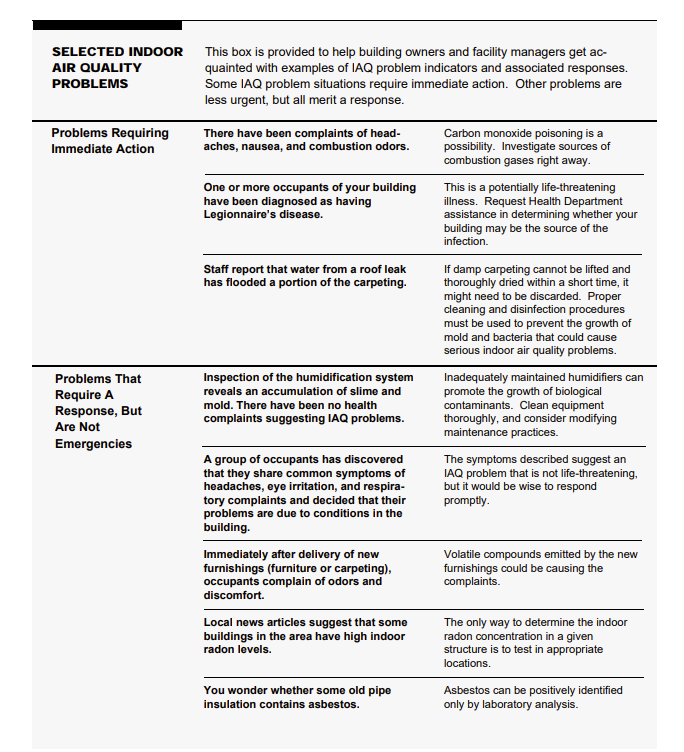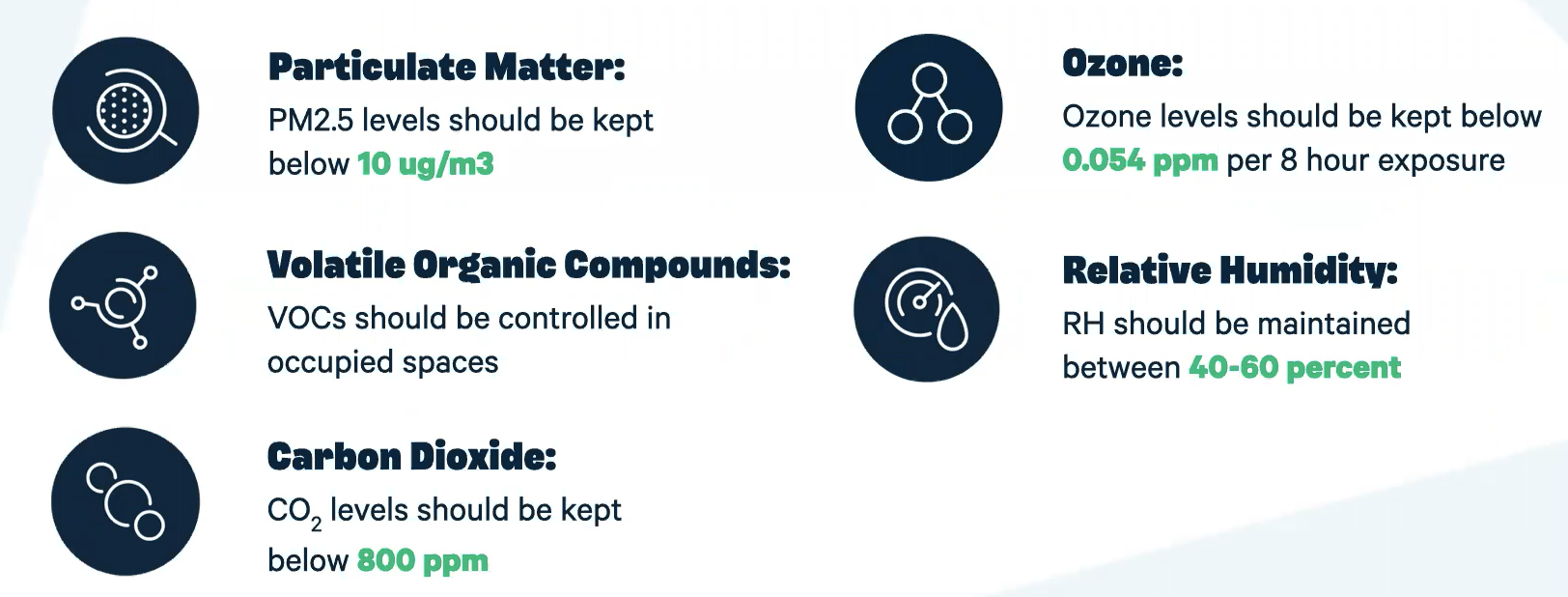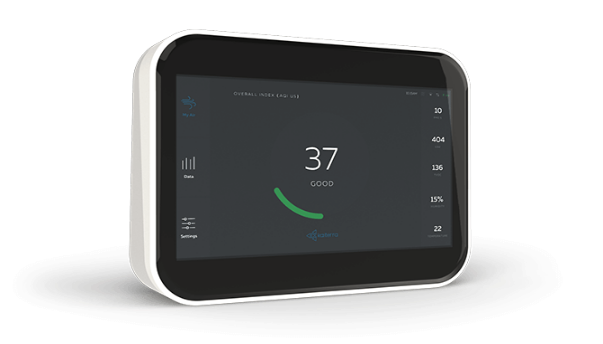Newsletter
The reports of the office’s death were greatly exaggerated. While the COVID-19 pandemic has caused a shift in mindset, most companies have not gone all-in on remote and are adopting hybrid or office-first models (according to this list, this is true of the vast majority of Fortune 100’s). But as employees return to their desks, workstations, and conference rooms, they are more aware than ever of the quality of the air that they breathe, and the potential risks it poses if ignored.
Of course, indoor air quality (IAQ) was a known issue far before 2020, and it was always the responsibility of employers, facility managers, and property owners. However, today a new factor has come into play - transparency. Occupants need to feel safe in addition to being safe. The state of air quality, and the actions taken to improve it, need to be communicated clearly, frequently, and honestly. Companies that fail to do so risk losing employee trust and suffering disruption in their return-to-office plans.
While this heightened focus on air quality might add some initial burden in the short term, over the long term companies stand to benefit from IAQ through increased productivity, lower absenteeism, and higher employee retention.
This comprehensive guide covers the basics of IAQ for offices, how you can understand whether you have an indoor air quality problem, the steps you can take to improve, and ways to communicate the results with building occupants.
What Indoor Air Quality Means for Offices
The EPA defines indoor air quality (IAQ) as:
The air quality within and around buildings and structures, especially as it relates to the health and comfort of building occupants.
In practice, IAQ covers two key areas:
- Ventilation: The introduction of fresh air into the building, typically through HVAC systems.
- Controlling contaminants: Monitoring the air and reducing the quantities of harmful chemicals, gasses, viruses, and bacteria.
A related concept is thermal comfort - maintaining temperature and humidity levels inside the building at a level that suits the activities being done within.
How Poor Air Quality Hurts Health and Productivity
Poor indoor air quality can have wide-ranging impacts on productivity, ranging from discomfort to sick days to long-term health problems.
The short-term impacts of exposure to poor indoor air pollution include fatigue, irritation of the eyes, nose, and throat, headaches, and dizziness. Poor air circulation might also cause spaces to feel stuffy and unpleasant, and cause allergies and respiratory tract infections, including COVID-19. All of these lead to absenteeism, hurt morale, and destroy productivity.
The longer-term effects can be significantly worse - and could include respiratory and heart diseases as well as some cancers. These potentially fatal conditions might develop years after prolonged exposure, and it is not always clear which specific pollutant or combination of pollutants was responsible.
Read more about how IAQ contributes to Sick Building Syndrome.
The 4 Key Causes of Poor Air Quality in the Workplace
A single root cause of IAQ issues can be difficult to pinpoint, as the quality of the air in an office building is determined by a complex combination of human and non-human elements such as:
- The behavior of tenants in the building - e.g., cooking being done in cafeterias, using certain cleaning materials, congregating in poorly ventilated spaces
- Ventilation, including the state of mechanical ventilation systems and air filters
- The quality of the air outside of the building, and how much is being brought in through ventilation
While there are cases where you might identify a single issue such as poor HVAC maintenance as the main culprit, most scenarios will be more complex. The typical contributing factors are:
Indoor Contaminants
Certain materials, items, and equipment can generate contaminants that are detrimental to health - volatile organic compounds (VOCs), particulate matter, and ozone. These could include building and clearing materials, office supplies, building components, and furnishing.
Below is a non-exhaustive list of potential troublemakers:
| Category | Examples |
| Office equipment | Photocopiers, printers |
| Supplies | Solvents, toner, ammonia |
| Mechanical systems | Elevator motors |
| Cleaning and housekeeping | Air fresheners, cleaning wipes, stored trash, airborne dust from vacuuming or sweeping |
| Maintenance | Paint, caulk, adhesives |
| Pest control | Pesticides |
| Building components | Damaged asbestos |
| Furnishings | Carpets, curtains and other textiles that collect dust, deteriorated furniture |
| Mixed-use areas | Exercise rooms, cafeterias, laboratories |
| Personal activities | Use of deodorants or other cosmetics |
Issues With Outdoor Air
While fresh air is often seen as the antidote to poor IAQ, there are places and times in which the ambient outdoor air can be worse than indoors. A common example would be places that suffer from wildfires - natural events that can increase particulate matter to dangerous levels. Pulling in this air will worsen rather than improve the quality of air in the office.
Other typical air pollution that can occur outside could be due to pollen and dust, industrial pollution, vehicle exhaust, dumpsters, and unsanitary debris. Highly polluted outdoor air impacts the quality of indoor air as well as causes HVAC systems to degrade more quickly.
Maintenance and Cleanliness
A poorly maintained space attracts biological contaminants - bacteria, viruses, fungi, dust mites, animal dander, and pollen. These can occur due to untreated spills, inadequate humidity, or poor cleaning practices, and can cause allergies, asthma, and infections.

HVAC Systems and Ventilation
HVAC (heating, ventilation, and air conditioning) covers both ventilation and the related systems that heat, cool, and filter the air present in a building. As we’ve covered in our guide to HVAC systems and indoor air quality, these systems need to be maintained regularly, and failing to do so will cause issues such as inadequate air circulation, poor filtering, or uncomfortable thermal conditions.
Airflow Patterns
The movement of air within the building is determined by a combination of natural forces, mechanical and natural ventilation, and human activity. Certain areas in the building might lend themselves to large crowds congregating for prolonged periods - lobbies, conference rooms, break rooms. These spaces require extra attention as the air quality in them will often be poorer.
Identifying Air Quality Issues: From Reactive to Proactive
As you can understand from reading the previous section, there are many potential causes of poor air quality, especially when multiple small problems can combine in unpredictable ways to create a larger problem. No building will ever be completely free of potential air quality problems that inevitably arise from human activity. But when do these problems become serious enough to warrant your attention?
In the past, companies would mostly find out about air quality problems by conducting interviews and essentially waiting for employees to complain or get sick. For example, the following table appears in the EPA’s Building Air Quality: A Guide for Building Owners and Facility Managers (PDF) from 1989:

Source: EPA
Air Quality Monitoring Best Practices
Air quality monitoring is a large topic - if you want to gain a better understanding of it, we’d recommend taking our free crash course. Each commercial building has its own characteristics: a coworking space will be different from a convention center, both in its physical layout and in the behavior of its occupants.
Nevertheless, here too we can point at several patterns that you need to consider and which apply to any IAQ monitoring project:
1. Have a Plan
IAQ monitoring will require you to purchase specialized equipment and make a series of decisions on what to measure and where. Before embarking on this journey, you should decide what your goals are and choose the equipment that best helps you achieve them. Questions you might ask include:
- Are you looking to obtain WELL or Fitwel certification? If so, can your monitors measure the required parameters?
- Which data do you need to collect? Where will you store and analyze the data?
- Do you plan to integrate your IAQ monitoring with other building management systems?
We’ve written more about this topic in our guide to choosing commercial air quality monitors.
2. Set Benchmarks
Without benchmarks or quantitative comparison points, the data you collect will be meaningless. There are many different air quality standards you can use for a reference point - including from government agencies, non-governmental organizations such as the WHO, and third-party providers such as WELL, Fitwel, and RESET.
Your benchmark should cover the key air quality parameters that you will be tracking over time - usually TVOC, particulate matter, CO2, ozone, and relative humidity.

Example benchmark we recommend for Kaiterra customers
3. Measure Continuously and Comprehensively
An advantage of using IAQ monitors rather than relying on outsourced spot testing is that you can achieve much broader coverage in both time and space. This means:
- Measuring over different times of day and periods of the year: This can allow you to understand how natural events such as wildfires, or human-made events such as cleaning schedules, affect the quality of the air inside the office.
- Measuring in different parts of the building: Often air quality might be good in areas that are less occupied, but much worse in crowded areas such as meeting rooms. A comprehensive measurement strategy will inform you of the weaknesses in your airflow, ventilation, or source control, allowing you to find and fix these issues faster.
Improving Air Quality - 6 Ideas on Where to Start
If measuring air quality is complex, improving it can be even more complicated. Here too there are many factors at play and a distinct lack of one-size-fits-all solutions. Organizations will typically employ some of these strategies to improve air quality in offices:
HVAC maintenance: Regularly maintaining HVAC systems is essential, but what many fail to realize is that this does not just mean replacing the filters based on the manufacturer’s recommended schedule - high outdoor pollution or dusty environments can lead to HVAC systems deteriorating much more quickly. Proactive air quality monitoring can alert you to issues with HVAC and trigger further investigation.
Source control: Regularly audit office supplies and materials used for maintenance, construction, and cleaning. Aim to reduce the use of known VOC emitters. Maintain clear policies on this and communicate them to employees and third-party service providers.
Space planning: Ensure that you are not blocking airflow and ventilation ducts. Map out the patterns of airflow in the building to ensure fresh air is freely circulating to all spaces.

Adjusting ventilation according to outdoor air quality: If wildfires or other phenomena cause the outdoor air to temporarily become worse than indoor air, you might want to reduce the level of ventilation during these periods. Timely data about outdoor air quality can be used as a trigger for changes in ventilation schedules.
Using air quality measurements to identify issues: The data you get from your air quality monitors will help you understand what could be causing the issue, and suggest the possible solution pathways. Here are some examples of how different IAQ parameters might hint at the steps you need to take:
| Parameter | Possible Cause | Possible Solution |
| CO2 | Indoor sources - exhalation | Ventilation, reducing overcrowding |
| VOCs | Indoor sources - materials | Source control, partitioning, removal |
| Particulate matter | Indoor sources (dust, carpeting), outdoor sources (wildfires), HVAC maintenance | Adjusting ventilation during periods of poor outdoor air, removing dust accumulating textiles |
| Ozone | Certain air purifiers, outdoor pollution | Adjusting ventilation, removing ozone-generating devices |
| Humidity | HVAC issues, condensation, spillage | Inspect HVAC systems |
3 Ways to Effectively Share Data
All of these steps to measure and improve indoor air quality are essential; but in a post-COVID world, it’s not enough to do the right thing without also making it seen. Occupants, tenants, and employees are demanding transparent and timely information on the quality of the air in office buildings - and as employers or facility managers, you need to deliver.
Kaiterra customers have seen success in making data available in 3 main ways:
- Displays on devices - air quality monitors placed in visible locations can be used to display air quality data in addition to measuring it. Of course, you’ll need a device with a screen display, such as the Sensedge:

- TV monitors - for key areas such as conference rooms, you might want to give an additional level of visibility and a more detailed view by displaying air quality data on large television monitors placed on the office walls.
- Online portal and dashboard - give occupants the ability to monitor air quality at all times and even remotely (such as when deciding whether to come into the office) by creating an online portal where they can see the key data in an air quality dashboard.
Air Quality is Complicated. Learn From the Pros
This post is long - but we’ve still only scratched the surface. Measuring and improving air quality is a highly technical field with many nuances; more complex projects might require specialist companies to plan or implement.
We go into these issues in a lot more depth in our recent webinar Interpreting IAQ Data in Healthy Buildings: Turning Insights into Action. You can watch it for free to see real-life examples from Kaiterra customers who dealt with scenarios such as varying levels of particulate matter throughout the day, or differences between indoor and outdoor air quality. We highly recommend it if you want to get a deeper understanding of how IAQ data helps you identify and solve air quality issues. Here’s the link again.
If you want to be inspired by another real-life example, check out our recent case study with Sterling Bay - the company that designed urban campuses for Google, McDonald's, Glassdoor, Pinterest, and Tyson Foods.
If you’re ready to take the next step and find out how your office building can benefit from IAQ monitoring, discuss timelines, and understand costs - go ahead and schedule a free consultation with a Kaiterra air quality expert to discuss your project:






.png?width=200&height=148&name=Menu%20C%20(2).png)

.png?width=307&height=228&name=Menu%20-%20D%20(1).png)
.png)


